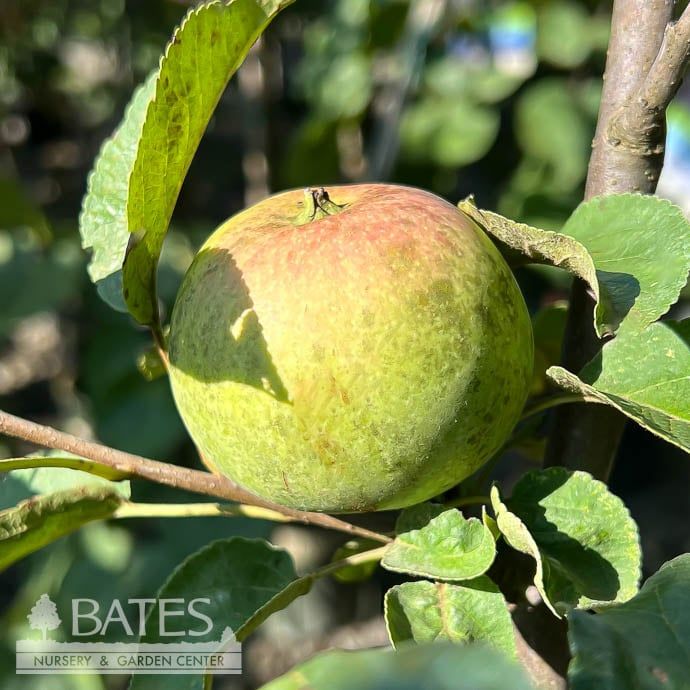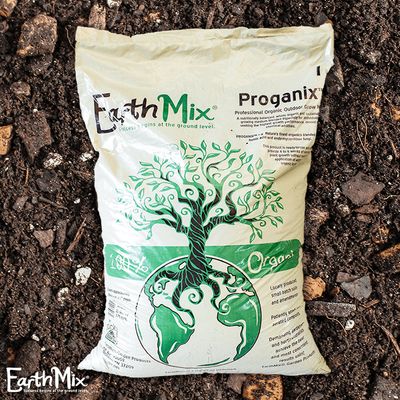Edible Topiary #7 Malus 5 in 1 Combo Apple
Edible Topiary #7 Malus 5 in 1 Combo Apple
SCIENTIFIC NAME: Malus domestica 'Braeburn', Malus domestica 'Fuji', Malus domestica 'Gala', Malus domestica 'Honeycrisp', Malus domestica 'McIntosh'
COMMON NAME: 5-in-1 apple tree including apple varieties Braeburn, Fuji, Gala, Honeycrisp, and McIntosh (also known as Red McIntosh)
GARDEN SIZE: 12-15 ft. tall and wide
USDA ZONE: 5-8
EXPOSURE: Full Sun
WATER & SOIL: Loamy & well drained soil
HABIT (FORM): Semi-dwarf
FOLIAGE: Deciduous; Green
POLLENIZATION: The five apple varietes grafted on this tree pollenize one another, so the tree will bear fruit even without an additional companion tree.
CARE: Prune while the tree is dormant. Remove water sprouts in June or July. Options for controlling pests, bacterial infections, and fungal disease include dormant oils applied early in the season before blooming, scented insect traps, and copper-based fungicides. DO NOT apply insecticides during blooming. This risks harming bees, which are crucial for pollination and fruit production. If necessary, fireblight can be treated with a streptomycin antibiotic spray during blooming. Apple trees need about an inch of water every 7-10 days, though young trees need a little more during their first growing season as they establish roots. If not enough rain has fallen, give the tree extra water by running a hose at a trickle around the base of the tree until the ground is fully soaked (but not for so long that there is standing water). Waterlogged roots can harm apple trees, so don't overdo it!
TOXICITY: Stems, leaves, and seeds contain cyanide and are therefore toxic to dogs, cats, horses, and humans. The fruit is non-toxic.
BRAEBURN APPLE INFORMATION:
BLOOM TIME: Late-midseason - Flowering Group 4
HARVEST TIME: Late season - late-October to mid-November
FRUIT: Small to medium apples with intense flavor. Their skin has a base hue of pale yellow-green, partially covered with patches of pinkish-red blush and striping. Their flesh is cream-colored and has a juicy, crisp texture that snaps cleanly when bitten. The flavor is strong and rich, sweet but not sugary, balanced with light acidity and notes of pear and cinnamon. Braeburn apples have the best flavor just after harvesting or when slightly chilled.
DISEASE RESISTANCE: Susceptible to cedar apple rust, fireblight, powdery mildew, and scab
FUJI APPLE INFORMATION:
BLOOM TIME: Midseason - Flowering Group 3
HARVEST TIME: Late season, ripens October to early November
FRUIT: Sweet, mild apples with speckled pink and yellow skin. Fuji apples keep well in storage.
USES: Eating fresh, cooking, juice, cider
DISEASE RESISTANCE: Resistant to powdery mildew, susceptible to scab, very susceptible to fireblight
GALA APPLE INFORMATION:
BLOOM TIME: Late-midseason - Flowering Group 4
HARVEST TIME: Midseason, ripens mid-September
FRUIT: Gala apples have a sweet, mild flavor and crisp, fine-grained texture. Their appearance is vibrant with a base color of yellow-orange, a blush of red-pink, and deeper red striping on top. Their red color deepens the longer they mature on the tree. Apples keep well in storage.
USES: Fresh eating, juice, salads. Adds a mild, slightly floral sweetness when combined with stronger apple flavors.
DISEASE RESISTANCE: Fairly susceptible to diseases, so plan to keep an eye on your tree’s health. Very susceptible to scab and fireblight, moderately susceptible to powdery mildew and cedar apple rust. They prefer a dry climate to minimize disease.
HONEYCRISP APPLE INFORMATION:
BLOOM TIME: Late-midseason - Flowering Group 4
HARVEST TIME: Midseason - ripens September
FRUIT: Medium to large apples. The skin has a yellow-green base color covered by red-orange mottling, sometimes with a hint of pink. The flesh is crisp and light with a straightforwardly sweet, balanced flavor. The juicy, pleasant texture and balanced taste make Honeycrisp a favorite supermarket variety, despite its tendency to bruise easily.
USES: Eating fresh, cooking, sauces and butters
DISEASE RESISTANCE: Can be challenging to grow due to susceptibility to disease. Resistant to scab and fireblight, somewhat susceptible to rust and powdery mildew, susceptible to bitter rot and bitter pit.
MCINTOSH APPLE INFORMATION:
BLOOM TIME: Early-midseason - Flowering Group 2
HARVEST TIME: Late-midseason, ripens mid-September
FRUIT: A round apple covered in swirls of muted red and spring green, varying in pattern based on how sunlight hits the growing apple. The bright white flesh has a tart flavor that sweetens as the apple matures. Its texture is tender and quickly breaks down into a puree when cooked.
DISEASE RESISTANCE: Good general disease resistance, somewhat resistant to cedar apple rust, susceptible to fireblight and apple scab.




